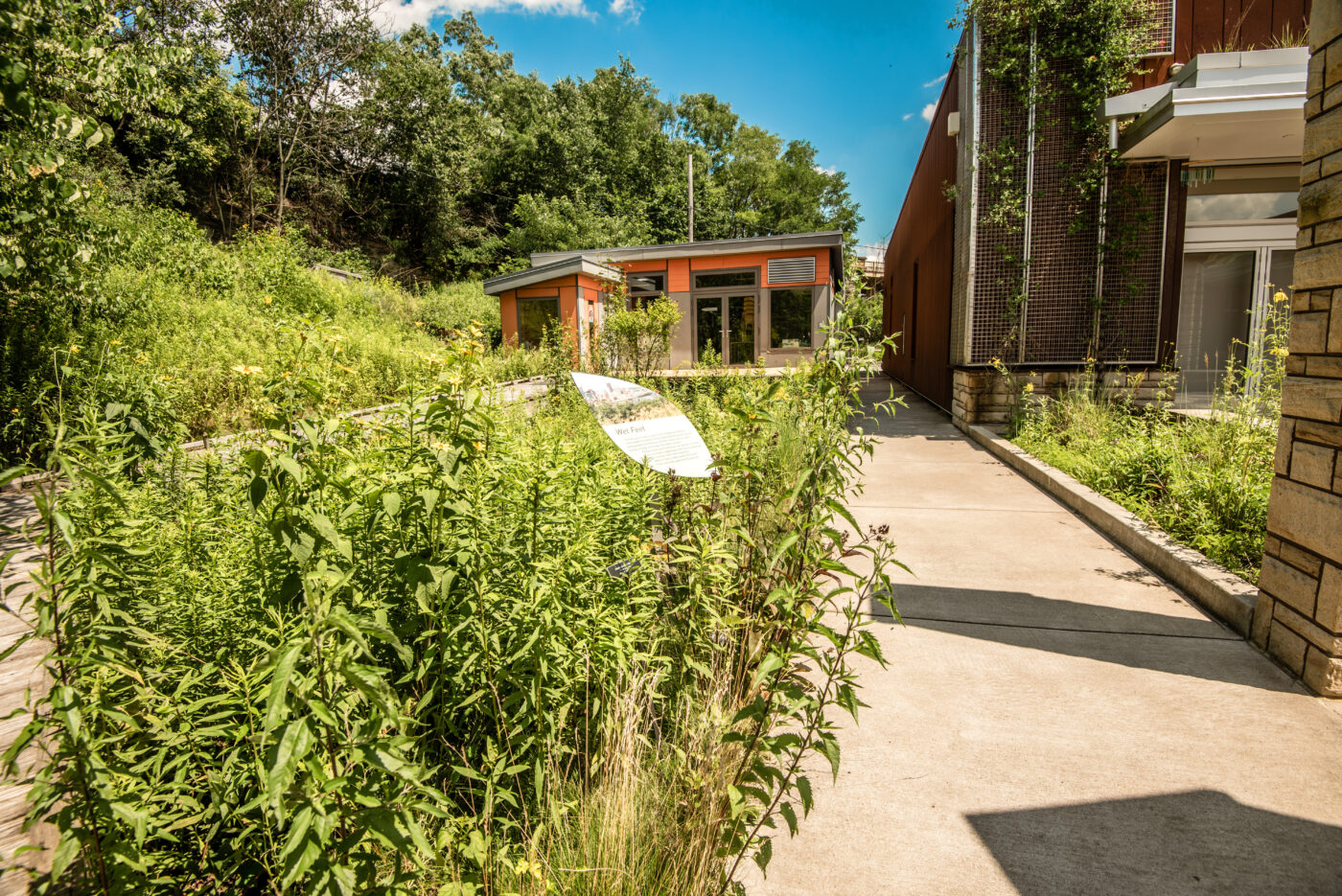Exhibit Staging Center at Phipps Conservatory & Botanical Gardens

Project Square Footage (ft2):
10,670
Year Built:
2019
Green Building Certifications:
LEED Platinum Certified, WELL Health & Safety Platinum Certified, Living Building Challenge
Project Team:
FortyEighty Architecture, Common Ground, Iams Consulting, LLC, evolveEA, Studio Phipps, Massaro Corporation, Shepley Bulfinch, Karl Steinmetz Designs, Building Performance Architecture, CJL Engineering, 7group, Carnegie Mellon University — Center for Building Performance and Diagnostics, Green Building Alliance, University of Pittsburgh — Mascaro Center for Sustainable Innovation, Phipps Conservatory & Botanical Gardens
What are the project’s key sustainability features?
With block wall masonry, a flat roof, and no windows, the City of Pittsburgh’s former public works building is a typical industrial facility of the 1960s — but it’s not the kind of building most would associate with sustainable design. In 2019, Phipps adapted this structure into its Exhibit Staging Center (ESC) with a dynamic, modernized design.
Now one of the greenest buildings in the world, the space prioritizes the health and safety of people and the planet, achieving three of the world’s most rigorous building standards: Living Building Challenge (2023), LEED Platinum (2022), and WELL Platinum (2021). The project also achieved the WELL Health-Safety Rating for Facility Operations and Management.
The health and well-being of all of our staff are important, which is why the ESC continues to be a space for labor workers and grounds crew, pushing the boundaries of existing standards. In addition to space for prop creation, the ESC features a yoga studio, fitness center, and meditation room to encourage the mental and physical wellness of employees.
Like the CSL and Nature Lab, the ESC manages all storm and sanitary water. It is net-positive, producing more electricity than it uses. It also efficiently uses direct current produced by the rooftop solar panels to power the lights, eliminating the wasteful inversion to alternating current.


